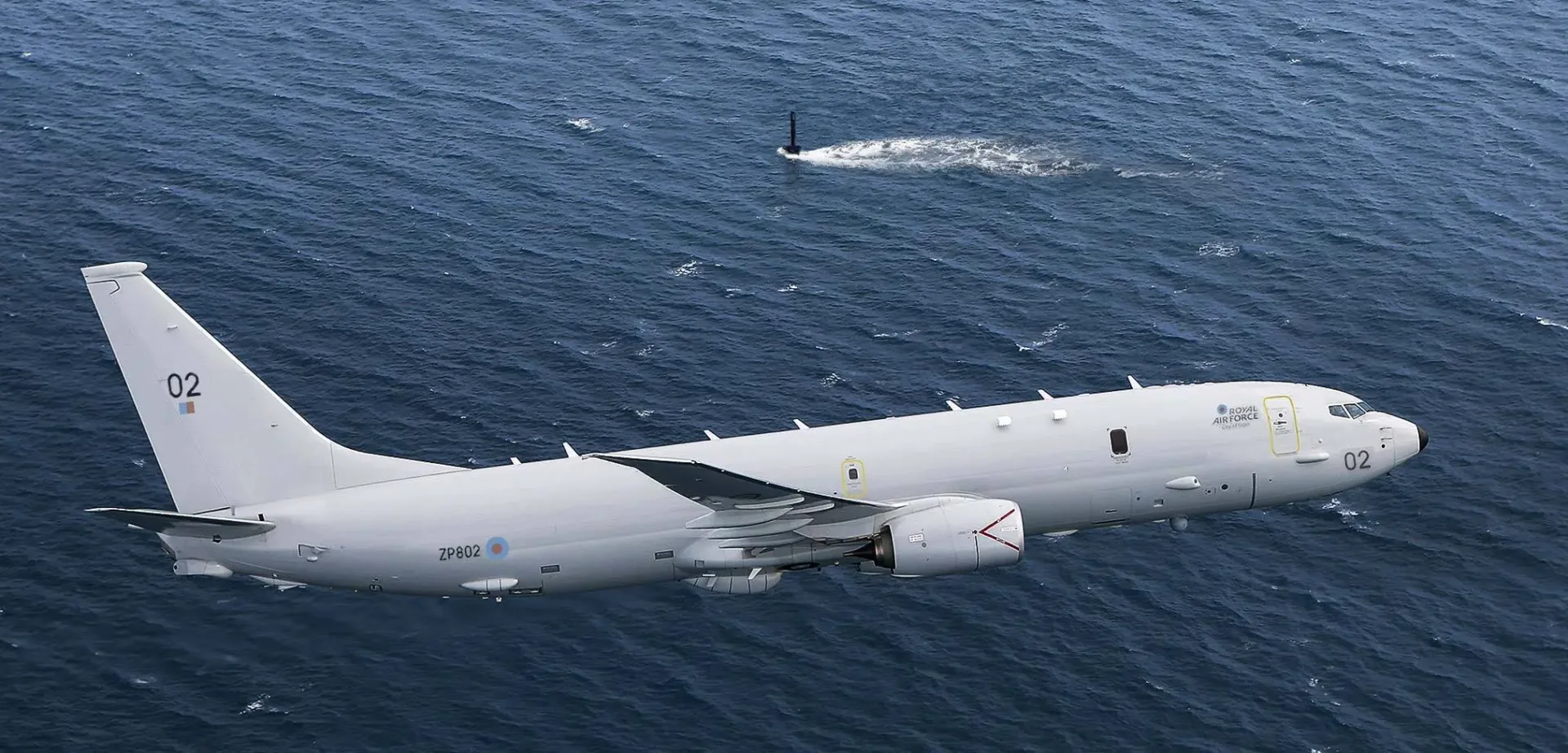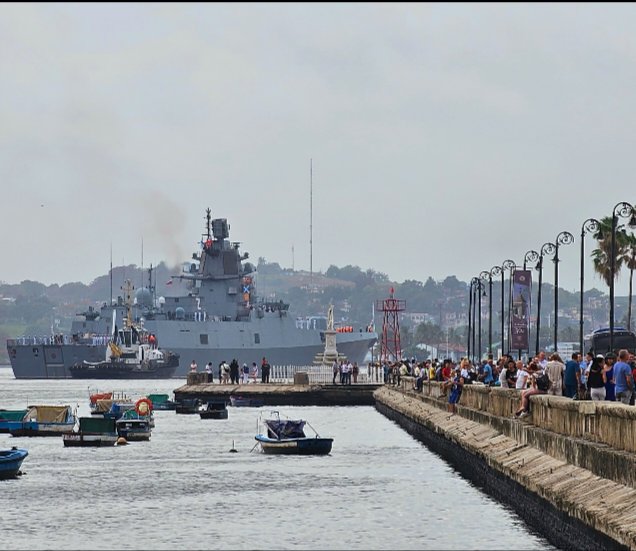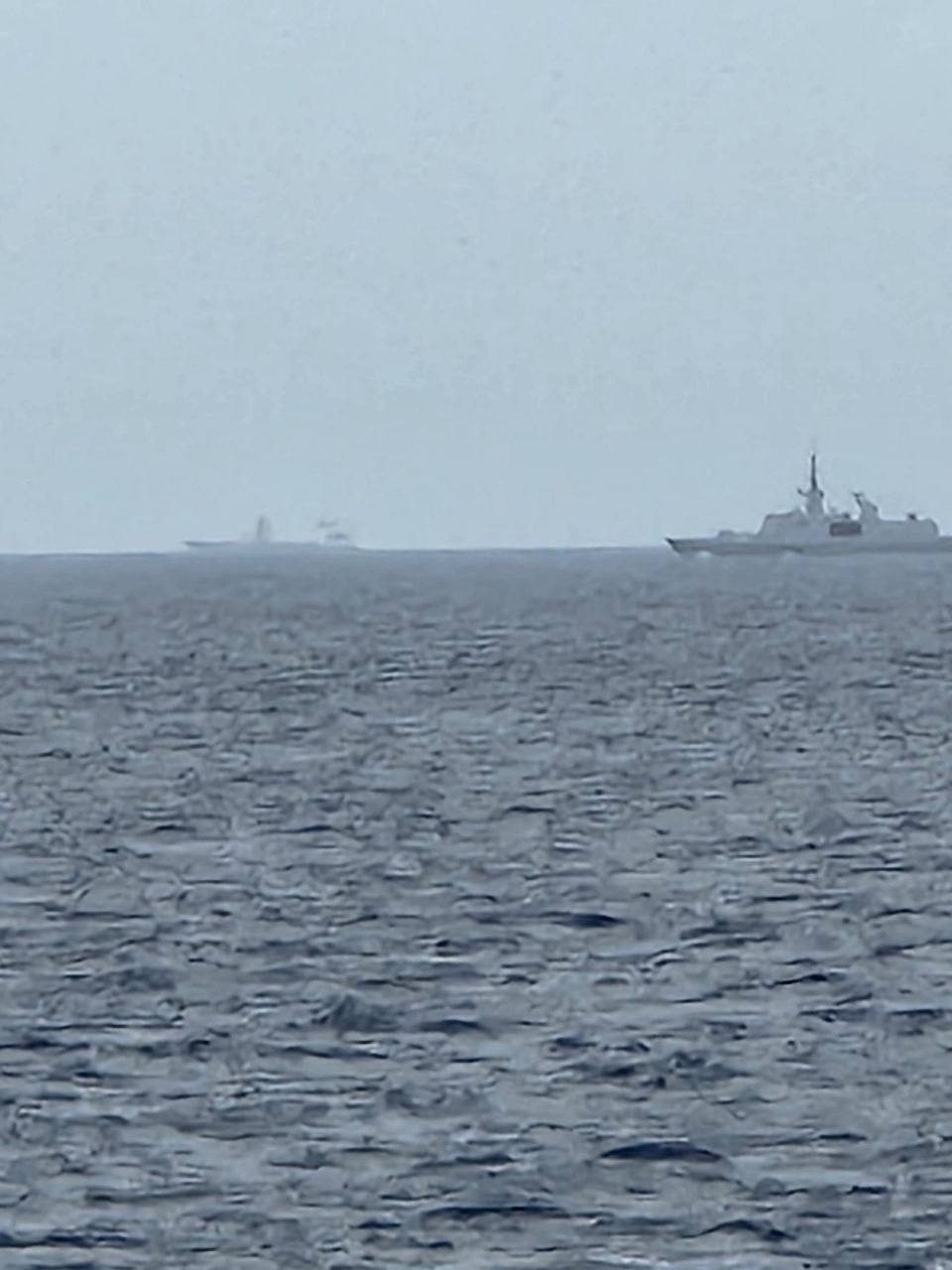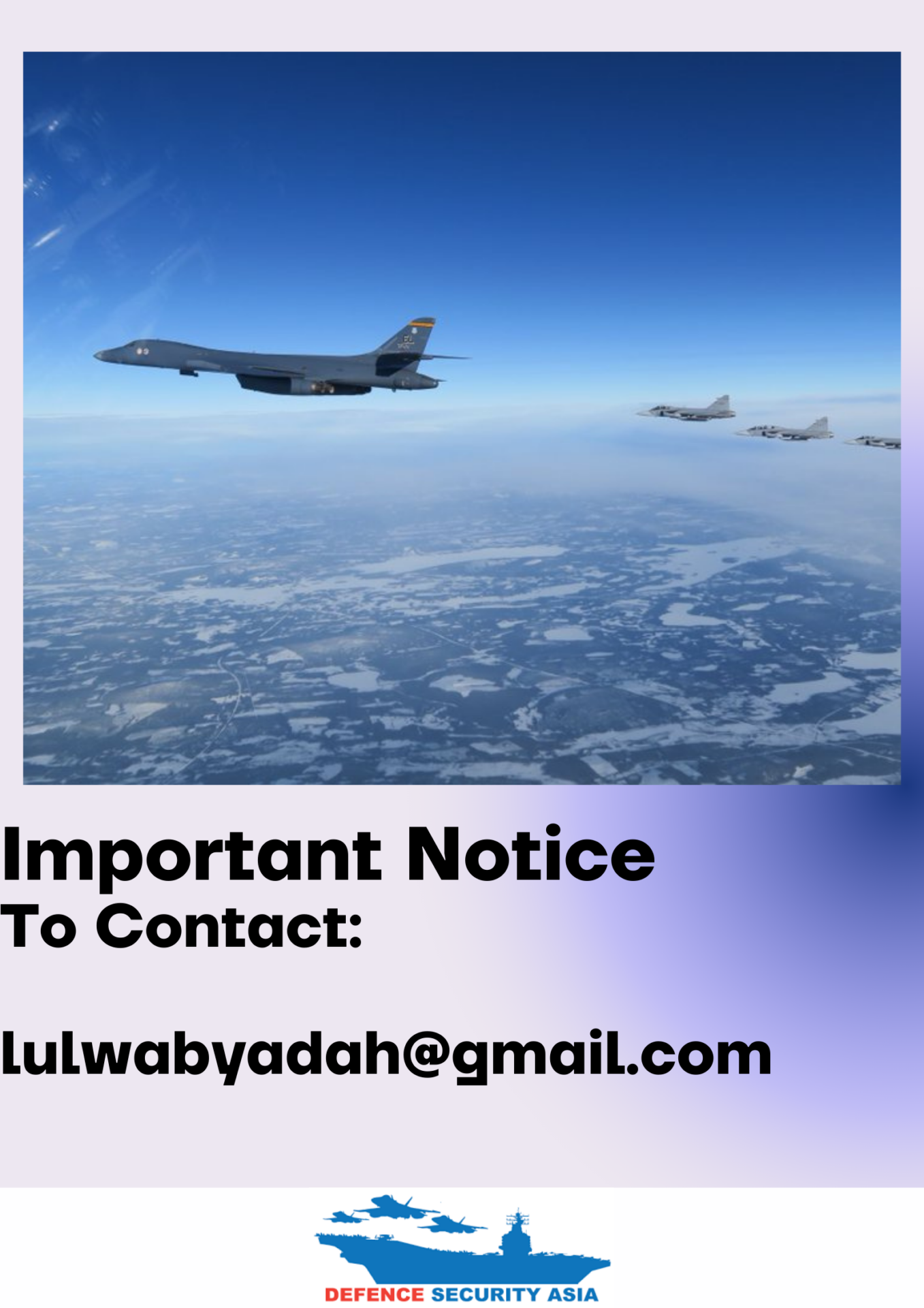Russian Warships Depart Havana After Five Days, Continuously Tracked by American Aircraft and Ships
Immediately upon departing Cuban territorial waters, the United States deployed at least two P-8 Poseidon maritime patrol and anti-submarine warfare (ASW) aircraft to monitor the movements of the Russian naval contingent, including the Yasen-class nuclear submarine "Kazan."
(DEFENCE SECURITY ASIA) — After a five-day visit to Cuba, the Yasen-class nuclear submarine “Kazan” and the frigate “Admiral Gorshkov,” along with two other Russian Navy vessels, departed the Caribbean island nation.
The presence of “Kazan” and “Admiral Gorshkov” in Cuba, accompanied by the fuel supply ship “Pashin” and the rescue tug boat “Chiker,” raised concerns in the United States, although it initially stated that the visit did not pose a security threat.
“Today, a group of ships from the Northern Fleet led by the frigate Admiral Gorshkov concluded its informal visit and left the port of Havana in the Republic of Cuba,” a Russian media office stated in a release.
It mentioned that upon exiting Cuban territorial waters, the Russian Northern Fleet group would continue its long-range deployment plan.
Simultaneously, as soon as they left Cuban waters, the United States deployed at least two maritime patrol and anti-submarine warfare (ASW) P-8 Poseidon aircraft to monitor the movement of the Russian naval group, including the Yasen-class nuclear submarine “Kazan.”

In addition to the P-8 Poseidon aircraft, US authorities reportedly dispatched Arleigh Burke-class destroyers and a Canadian Coast Guard vessel.
Not only the United States Navy but also the Canadian Navy sent a warship to shadow the Russian fleet as it sailed through waters near North America.
Five days earlier, as the Russian naval group headed towards Cuba, the United States also mobilized warships and maritime patrol aircraft in an effort to shadow the Russian vessels, particularly the submarine “Kazan.”
The United States Navy also send a nuclear attack submarine USS Helena to its naval base in Guantanamo Bay, Cuba, with many observers saw it as a “warning” to the visiting Russian warships.
Open Source Intelligence (OSINT) observers and data from flight and shipping tracking applications showed that American and Canadian naval and aerial assets were shadowing the Russian military assets as it approached the Cuba water five days ago.

This shadowing activity included the US Coast Guard vessel CG Stone, the US Navy destroyers USS Truxtun and USS Donald Cook, and the Canadian Navy frigate HMCS Ville de Quebec.
There were also reports of a La Fayette-class frigate from the French Navy involved in shadowing the Russian warships.
The US military was reportedly alarmed when the Russian warships, especially the nuclear-powered submarine “Kazan” and the frigate “Admiral Gorshkov,” were reported to be just 66 miles (106 km) from the Florida coast while en route to Cuba.
During their journey to Cuba five days ago, the Russian naval vessels, including a nuclear-powered submarine, conducted long-range strike drills not far from the US coastline.


According to a statement from the Russian Ministry of Defense, the Russian naval vessels involved carried out a simulated long-range attack on “enemy” naval targets approximately 600 km from their position.
Given their position off the US coast at the time, the simulated attack almost certainly targeted the United States or its naval assets.
The frigate “Admiral Gorshkov” and the Yasen-class submarine “Kazan” are equipped with hypersonic “Tsirkon” missiles, which not only travel at Mach 10 but also have the capability to strike targets more than 1,000 km away.
In addition to “Tsirkon” hypersonic missiles, both modern Russian assets are also equipped with “Kalibr” and “Oniks” cruise missiles, which can strike long-range targets. — DSA



Comments are closed.